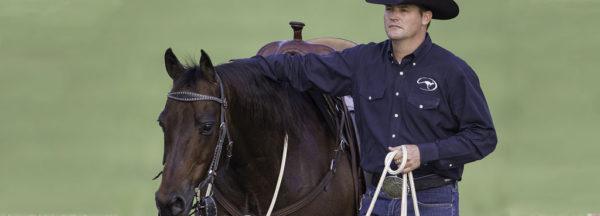Sweeten a Barn-Sour Horse

I Don’t Wanna go!
Does your horse throw “I don’t wanna go tantrums” every time you try to ride him away from the barn? Or, when you turn him back toward the barn, does he start power walking or jigging home? If so, you’re not alone. Horses are social animals and quickly bond with one another, which can make them reluctant to leave the barn. In fact, how to correct a barn-sour horse is one of the most common questions I get asked. Horses that are barn sour are not only frustrating but dangerous, as they often rear or run backwards when they don’t want to leave the barn.
When I address barn-sour horses, I always tell people to think of their horse’s desire to get back to the barn like this: If you worked for me and I made you work all day in a field under the hot sun and at the end of the day, I took you to an air conditioned room, let you relax and gave you ice cream to eat, it wouldn’t take long for you to resent going out in the field and start looking forward to quitting time. If knockoff time was at 3, you’d want to leave the field at 2, and then 1, and pretty soon you wouldn’t even want to go to the field at all.
That’s exactly how your horse feels about leaving the barn. At the barn he gets to rest, relax, eat and socialize with his buddies. Out on the trail or in the arena, he has to work and get hot and sweaty. Which sounds like the better deal to you? When you stop and think about it, it’s no wonder that a lot of us have to deal with barn-sour horses.
A SYMPTOM OF A CAUSE
You might be able to get your horse 20 or 30 feet down the trail, and then he starts backing up, running sideways or rearing. You’re a picture of flailing reins and spurs as you try to persuade him to head away from the barn, but the more you try to make him leave the barn, the more violent and disrespectful he gets. To him, the barn is better than being ridden and worked hard. Horses are basically lazy creatures. They’d rather put in the least amount of effort as possible to get the day over and done with. Instead of making the horse leave the barn, give him a reason to want to leave.
In order for the horse to want to leave the barn, use a little reverse psychology. Instead of him thinking the barn is the best place to be, make him think being away from the barn is the better option. You’ll do that by working him hard at the barn, where he wants to be. I do a lot of serpentines, rollbacks and bending transitions. The more changes of direction you can make the horse do, the more he has to pay attention to you and concentrate on his job. When you’re working the horse, use your imagination. It doesn’t matter how you move his feet, just that you make him hustle and do a lot of changes of direction.
If you have a green horse that isn’t advanced in his training or you’re not confident enough as a rider to do rollbacks, you can still make him hustle his feet by trotting or loping him in circles or weaving in and out of objects around the barn. It doesn’t matter what you do, just get his feet moving. Instead of viewing your horse’s problem as a negative, turn it into a positive. In other words, don’t just get him hot and sweaty, train on him at the same time to soften and supple his five body parts and increase his responsiveness.
Concentrating on moving the horse’s feet also gives you a job to do instead of focusing on your horse’s bad behavior. So if he’s hopping up like he wants to rear or if he’s rushing backwards, don’t worry about him rearing, just go put his feet to work. If you’re constantly redirecting his feet, he won’t be able to back up or rear. A horse can’t rear if his feet are moving.
After working the horse 10 to 15 minutes, walk him away from the barn and let him rest. While he’s resting, put him on a big, loose rein and rub his neck. Show him that being away from the barn is a good thing—he gets to rest and feel comfortable.
Let the horse rest a good five to 10 minutes before taking him back to the barn and working him again. If your horse is in a hurry to get back to the barn and doesn’t want to stand still when you rest him, he’s just telling you that you need to go back to the barn and work him harder and try again. If he wants to trot or lope back to the barn, let him. It won’t take long before he realizes that he’s only hurrying back to hard work.